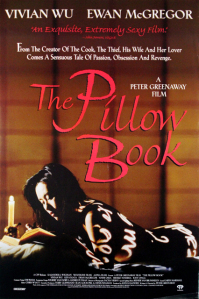Shiri Eisner's Blog
October 29, 2022
We need to talk about Interview With the Vampire’s biphobia (Part 1: Bi erasure)
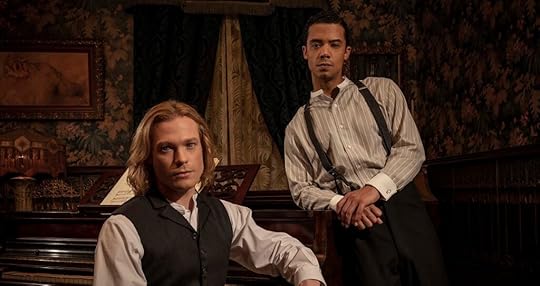
Amid rave reviews, praising the new AMC series for “finally letting the vampires be gay”, the conversation about the show’s treatment of bisexuality is silenced. To describe the show’s take on bisexuality in one word, it is complicated. Simultaneously erased, elevated, trodden down, associated with evil, seductiveness, villainy, privilege, freedom, and queerness. Laden with rich meaning, some of the scenes form a master class in cinematic storytelling through bisexuality, while others are the epitome of classic biphobia.
This is going to be a series of articles in which I show how Interview With the Vampire takes the source material’s bisexuality and turns it into ambivalent biphobia, by depicting it as simultaneously oppressive and liberatory. I’ll explore bisexual erasure, the meanings given to bisexuality, and explain how these ultimately reveal bisexuality’s subversive power against dominant social structures.
Let me start with a disclaimer.
Just so we’re clear – this is a great showThough much complaint is heard from fans of the Anne Rice books for deviating from the original, critics have been praising this show to no end – and justifiably so. The show’s irreverent treatment of the source material is nothing short of a stroke of genius. The showrunners took the original book and ran with it. They spun it into a retelling that is fresh and original, standing on the shoulders of a giant to create something new, while still preserving the core, the heart of the story.
Specifically, the choice of making Louis – originally a slave plantation owner – black, brings a whole new level of meaning, depth, and complexity into the narrative. It exposes the viewers to a culture and experience that the source material could never dream of. It also makes for a brilliant solution to the problem of depicting a white plantation owner as the romanticized protagonist of the story, by literally turning the book’s racism on its head.
Even as its own text, without regard to the source material, this show does its job incredibly well. It’s well narrated, written, and acted. Its beautiful cinematography makes every episode a delight to behold. It is completely legible to people who haven’t read the book, while still adding easter eggs and meta commentary on the original that both enriches and subverts it.
On the whole – I fucking love it.
And therein lies the problem – when something that does so very well on literally every level fails so hard in this.
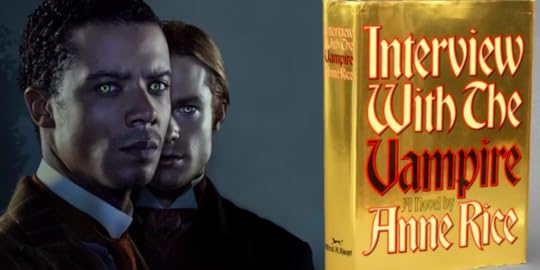 Bisexuality in the book
Bisexuality in the book[Book spoilers]
Interview With the Vampire is a very bisexual book. Though very little is explicit and on the surface, the subtext is rich with it. From the outset, the interview itself between Louis and Daniel takes place after they cruise each other and then go to Louis’ apartment. Most of the book/the interview itself focuses on his relationship with Lestat, starting with courtship and ending with an embivalent breakup. In addition, Louis tells about his love for a woman named Babette Freniere, which continues even after Lestat turns him into a vampire. When Louis and Lestat turn Claudia, Louis’ feelings towards her aren’t just fatherly, as in the show, but also romantic (yes, Anne Rice has a penchant for p*dophilia). Their relationship is consistently described in terms that blend and obscure the boundary between fatherly and romantic love. At one point in the book, while talking to Louis, Armand calls her “Your lover”, to which Louis replies: “No, my beloved”, emphasizing the complexity and multiplicity of Louis and Claudia’s relationship and feelings for one another. All the while, during this part of the book, Armand also is trying to court Louis (ultimately successfully, once Claudia dies). So, Louis is bisexual.
Moving on, both Interview With the Vampire and the Vampire Chronicles book series in general, make it abundantly clear that Lestat is bisexual. In Interview, he continues to feed on men and women, where bloodsucking is invariably described as erotic in Anne Rice’s books – both with the refrain that feeding replaces sex for vampires, and through the erotic language used to describe the act. Lestat is the one to seek out the relationship with Louis and turn him into a vampire. And throughout the Vampire Chronicles, Lestat has relationships, both romantic and erotic, with several women and men.
Daniel is also bisexual. During the Vampire Chronicles, he is shown to have relationships with Armand and Marius, and Anne Rice has spoken multiple times to the fact that all her vampires “transcend gender in their orientation”.
The book is not biphobic in its representation and storytelling. Don’t get me wrong, one can certainly make a case about the fetishization of male bisexuality in the books. It also, of course, links between bisexuality and vampirism, a well rich with meanings that by association imagine bisexuality as innate (the problematic notion that “everyone is bisexual really”), and as predatory and monstrous, dejected and dangerous. The latter meanings, though lovely when reclaimed, carry negative cultural meaning, therefore revealing a negative attitude and fear of bisexuality (=biphobia)*. But because Anne Rice’s vampires are all bisexual, and because they are humanized, romanticized, and eroticized, this doesn’t carry over to a strong negative characterization of bisexual vampire characters.
The show messed this up. And it starts with bisexual erasure.
[* Saying this is not, in fact, biphobic, nor is it a form of respectability politics. It becomes respectability politics when in response, we demand that bisexual characters be made respectable. Pointing out biphobic tropes , in itself, is not biphobic. Honestly this shouldn’t need explaining, but here we are.]
 One bi character left standing
One bi character left standingOut of three bisexual main characters, only one is left. Where it had the choice of staying true to the bisexual source, the show chooses to erase both Louis and Daniel’s bisexuality – Louis is made gay while Daniel is made straight. First and foremost, this change betrays somewhat of a bifurcated perception of bisexual identity and attraction, i.e. imagining it as “half gay” and “half straight”. One can imagine that the showrunners thought this change made sense as they chose which “half” to go with for each character.
We can only guess what motivated the showrunners to make this change. One option is that they wanted to tick more representation boxes. They knew the series would receive greater acclaim if one of the characters would be “fully gay” rather than just “half”, i.e. bisexual. They may have also felt they were being more faithful to the source material by doing so – as the rave reviews say, letting the story be “actually gay”. Similarly to the above, these two notions also reflect the belief that bisexuality is only “half”, that it is not “fully queer”, or that it’s a “cop out”.
Another reason why leaving Lestat as bisexual while making Louis gay might have made “more sense” to the showrunners is that Lestat is to a large extent the villain while Louis is the victim. The range of meanings associated with bisexuality in culture means people feel more comfortable seeing bi characters in villainous roles, it “makes sense” for people to associate bisexuality with evil. Whereas this has also been the case for representations of gay people in the past, it has overwhelmingly changed over the last 20 years. Though queer coding villains is still a prevalent practice, explicitly gay characters are not so often cast in such a role anymore. But bi characters are.
Yet another possible reason for this is the association between bisexuality and whiteness. After making Louis black, it might have made “less sense” to the showrunners for him to be bisexual, since bisexuality is widely perceived as a white identity (ironically enough, as statistically, bi people are disproportionately people of color). Meanwhile blackness, like gayness, is an oppressed identity that is actually perceived as oppressed. Therefore it makes “more sense” for the black character to bear a gay identity, while the white character is allowed to remain bisexual as an imagined marker of “privilege”.
On a more sympathetic note, one can also imagine the showrunners may have wanted to avoid the “everyone is bisexual” trope which is broadly present in the source material. As I noted above, this trope suggests that everyone is actually bisexual. It consigns bisexuality to an eternally latent status, always lurking underneath, but never present in the here and now. Combined with vampirism, it suggests that bisexuality is only possible when one exists outside of society and is able to live a long life. It also imagines bisexuality as supernatural and inhuman.*
[* Again, pointing this out is not biphobic, see above.]
[TW: discussion of p*dophilia]
Another valid reason why the showrunners may have chosen to do this is avoiding the p*dophilic tones in Louis and Claudia’s relationship. Anne Rice was openly supportive of p*dophilia, which is deeply disturbing. In the 1994 film, there is actually a scene where Kirsten Dunst and Brad Pitt kiss. She was 12 at the time, while he was 29. So I’m genuinely glad and relieved that they decided to leave that part out. However, they absolutely could have done that while letting Louis stay bisexual.
[End of TW]
Whatever the reason, making Lestat the only bisexual character makes him the focal point of bisexuality in the show. He remains to represent it alone, meaning that his depiction, his actions, and his function in the plot make up the whole of the show’s commentary on bisexuality. And the meanings given to his bisexuality in many ways echo the points made above.
In the next part, we’ll delve into the many and complicated meanings that the show attributes to bisexuality through Lestat’s character.
August 8, 2019
Jessica Jones’ Kith is my new bisexual favorite
[Warning: minor spoilers for Jessica Jones season 3]
[image error]
Despite bisexuality’s recent increase in media visibility, bisexual characters are still few and far in between, and looking for positive representations sometimes seems to be a fool’s quest. More often than not, we find bisexuality associated with traits society considers as negative, and used to convey less-than-favorable meanings.
In the rare cases bisexuality is not erased completely, it is most often used to convey characters’ duplicity, indecisiveness, moral ambiguity, and unstable nature. And though there’s much to love about bisexual villains or gray characters (who embody society’s anxiety of bisexuality’s subversive power), only rarely do we find them not just morally complex, but also humanized, not to mention carrying positive and liberatory meanings.
The character of Kith, featured in Jessica Jones’ third and final season, is one such character. Though she receives relatively little screen time, this bi woman of color character shines through as an embodiment of bifeminist values and the symbolic power of women’s bisexuality. Instead of undermining her character or narrative, Kith’s bisexuality underlines her characterization as an intelligent, independent, and resilient woman. Her strength is conveyed through bisexuality.
From the very first time Kith is presented on screen, she is shown as both strong and passionate, playing a cello while wearing a bold flowing red dress. As Jeri watches her, expectations build up towards their dialogue, revealing Kith to be Jeri’s ex-partner, who married a man after their breakup.
Within TV and film conventions, women characters in similar circumstances are presented as having abandoned their queer identities, and are made to apologize in various ways, either explicitly through dialogue, or indirectly through behavior. However, in this case, at no point does Kith’s dialogue or its delivery (wonderfully acted by Sarita Choudhury) offer even a hint of shame or apology about her bisexuality. Nor does the show ever suggest that she might not be bisexual – that she is “actually” gay or straight, or that she moved from a gay to a straight identity and lifestyle. Throughout her appearance on the show, Kith is simply bisexual. No apologies, no caveats.
And indeed, this character remains both unapologetic and strong throughout her interaction with Jeri, while her bisexuality is used to underline and convey her strength. As we move on into their two dates, we find Kith curious, fascinated, and drawn to Jeri, while still strongly maintaining her own boundaries. While remembering Jeri’s betrayal in the past, she gives her a chance to re-enter her life. And though she remains tentative and slightly reserved when the two begin their affair, she is also fully present and feeling, giving herself the freedom to explore while still protecting herself from being hurt again. In this, we quickly find, Kith cannot be possessed.
This knowledge deepens in their pillow talk scene, after they’d had sex. Here Kith speaks about her polyamorous relationship with her husband, Peter, and how instrumental it had been for them in dealing with their daughter’s death. “After Zoey died,” she says, “we gave each other our own sanity.” And so, in addition to characterizing Kith’s independence, this scene also presents bisexual polyamory as a vehicle for resilience and healing. This is what helped Kith and Peter recover from their loss.
As she leaves Jeri’s bed, Kith says, “Don’t worry, I won’t get attached.” This lets both Jeri and the audience know that although she isn’t certain on the details, she’s aware of Jeri’s manipulativeness. By making this explicit, she communicates her knowledge, her boundaries, and her conditional consent to be with Jeri. Finding a way to be present while attempting to keep herself safe from her manipulations.
Kith’s independence is further enhanced when she speaks to Jeri about Peter’s crimes, after those had been exposed. In conventional drama, men’s lies and deception are often presented as marital issues to be resolved through love and forgiveness by their women partners. However, Kith responds in a way that subverts normative representation. Instead of making excuses for Peter, justifying him, or trying to reconcile the relationship, she maintains her independence and holds him accountable. This is all the more emphasized as she tells him, “I don’t belong to you.” The fact that she does this in Jeri’s apartment heavily links this to her bisexuality, and reminds us of bi women’s power to always opt out of relationships with men.
This scene also contains perhaps the most defining description of Kith’s character within the dialogue, as Peter tells Jeri, “You can’t have her,” and Jeri responds, “Neither can you.” Here Kith’s male and female partners both assert that she can’t be possessed by either. Her independence is formulated and carried through her bisexuality – it means that no one can possess her.
Kith’s most triumphant moment in the show is her ultimate rejection of a relationship with Jeri. Oddly enough, in this, the show seems to favor Jeri’s point of view, leaving many viewers angry with Kith about her choice. This happens in two phases, each one showing Jeri opening up to Kith and revealing her vulnerability, only to be rejected by her. In the first instance, she reveals that she’d continued loving Kith for years, only waiting for the right moment to get back together. In the second, she tells Kith about her ALS, a progressive degenerative illness that will make her disabled, and finally kill her. It is in this moment that Kith speaks the line, “You don’t want to die alone, but you’re going to,” which invoked much backlash from the audience.
It’s worth remembering that at this point, Jeri has proven herself to be a devastating and destructive presence in Kith’s life. She knowingly seduced her while assuming she’s monogamous, then dug up dirt about her husband to make her leave him. As a result of her actions, Kith loses Peter first to breakup and then to suicide, and is left with both grief and a hefty monetary debt she can’t afford to pay. When Jeri offers to help her, she’s building up on damage that she herself had caused. In one of these scenes, Kith correctly calls this out, telling Jeri that she’s a “selfish manipulator,” and saying, “Every decision, every duplicitous act is always about Jeri Hogarth and no one else.” And in terms of characterization – both within this arc and throughout the series – she is absolutely right.
By appealing to Kith’s emotions and presenting her with a romanticized fantasy of what their relationship could be, Jeri attempts to obfuscate what their relationship actually is. She tries to pull Kith closer for her own benefit – so that she wouldn’t die alone – with complete disregard to how that might affect Kith herself. And so, Kith’s refusal to care for Jeri in her illness is not heartless, it is firmly grounded. While still thanking her for saving her life, her refusal of the relationship is a refusal to be manipulated or possessed.
If there is one big problem, though, with the way Kith’s character is handled by the show, it’s how her narrative comes to an end. While she begins her arc happy and stable in her life, involved with a both man and a woman within a polyamorous relationship, at the end of it her life is destabilized and she is left alone – as the result of both her partners’ actions. Following everything she’d been through, it seems she’s punished for her bisexuality, as bisexuality served as the cause and vehicle for her suffering. Simply put – if she wasn’t bisexual, the narrative as told could not have happened.
As an individual character, Kith is amazing, conveying strength, independence and resilience through her bisexuality. She is persistent in maintaining her boundaries and refuses to compromise them or give into manipulation even in challenging emotional circumstances. Within her narrative, her bisexuality serves as a vehicle for conveying these qualities, as they’re always shown to us through her relationships with Peter and with Jeri – engaging with both of them on her own terms, and rejecting them when they exceed her consented boundaries. This reflects the symbolic power of women’s bisexuality, charging it with meaning that subverts patriarchy, monogamy, and couplehood. As bi women, we still have to scavenge for our presence in media, reading texts in ways that might benefit and empower us. So though I wish her character wasn’t mishandled and punished for, and through, her bisexuality, I still find much to love and appreciate about her.
July 23, 2015
Guest post: Iranian LGBT Movement Without the B
by Zeynab Alsadat Peyghambarzadeh (originally published here)
Zeynab Alsadat Peyghambarzadeh started her voluntary activities in the field of gender and sexuality in 2003. She also worked as a researcher, social activist, and journalist. In 2011, Peyghambarzadeh relocated to Sweden and continued her activities. She is one of the co-founders of the Persian website “Dojensgara” (which means bisexual in Persian). Peyghambarzadeh holds a bachelor’s degree in sociology from Tehran University, and a master’s degree in gender studies from the Lund University in Sweden.
Credit: dojensgara.com
[Image: a rainbow-colored infinity sign, superimposed with a bisexual flag with a bisexual infinity symbol in the middle of it, and writing in Persian in white.]
The following is the most common clichés about bisexuals in Persian media:
1. Disregarding Bisexual Category among Other Sexual Minorities’ Categories
Persian media have provided little room for bisexuals’ independent voice, and homosexuals have primarily represented sexual minorities. One of the most common clichés is that there is no such category as bisexuality among diverse categories of sexualities and sexual practices. The Persian LGBT publications, such as “Cheragh,”
Similarly, many documentaries made in recent years about Iranian LGBT community, and academic research conducted on this issue, lack any attention to Iranian bisexuals. Among documentaries, one can mention BBC Persian’s documentary, “Under the Razor of Gender” and Farid Haerinejad’s “Out Of Iran; Iran’s Unwanted Sons and Daughters.”
The scholarly work of historians such as Afsaneh NajmAbadi and Janet Afary shows that similar to other societies, for centuries there have been Iranians who were involved were involved in simultaneous parallel sexual relation with both sexes. Perhaps the only research that has studies Iranian bisexuals as a separate category was conducted by Azadeh Nemati, though their sampling of bisexuals is so small that makes it difficult for the findings to be scientifically meaningful.
Existing online groups in Persian – including open chat rooms and social network groups- are often dedicated to lesbians, gay men, or transsexuals, and vocationally all of them, but Iranian bisexual men and women have no place in cyberspace where they can discuss their issues in Persian.
Perhaps these realities have prevented many people to come out as “bisexual” in cyberspace, and can explain why prominent Iranian LGBT activists rarely identify themselves as bisexual.
The same logic goes with human rights report that has addressed the LGBT situation in Iran. In a 2010 report of Human Rights Watch (HRW) about the situation of the LGBT community in Iran, bisexuals were described and judged by homosexuals. However, this report asserts that individuals from every category among sexual minorities, including bisexuals, were interviewed. Additionally, the report cited a bisexual category twice and each time, it inserted homosexuals’ judgments about bisexuals without offering any critical examination of their views.
In the HRW report, either bisexuality is being used by Iranian psychologist to oppress homosexuals or bisexuals are defined as homosexuals who are married and claim that they are bisexual. In the first case, Farrokh, a 28-year-old gay male from Karaj, told Human Rights Watch that “his parents took him to a series of psychiatrists and psychologists after he told them that he was gay.” As the report continues, according to Farrokh, some of these specialists were self-styled “Islamic psychiatrists” who convinced him that he was not homosexual: “When I was 17 years old my parents took me to a psychiatrist, in part because they suspected I was gay. I told my psychiatrist that I thought I was gay and he told my parents [about my confidential conversation with him]. It was very unprofessional of him to do this. They started pressuring me. Then they took me to an Islamic psychiatrist who told me I had an illness but that I could get better … By the time I was 21 they had convinced me that I was, in fact, bisexual. Everyone is bisexual, they said. ‘If you want you can be a heterosexual’.”
If from these psychologists’ perspective, everyone is bisexual, then, how can an individual decide to become heterosexual and not to remain bisexual? In the same report, Shadi, a 23-year-old lesbian, said: “There are a lot bisexual women in Iran who are actually lesbians, but they have to be bisexual in order to survive.”
Also, the HRW report states that “Several lesbians who spoke to Human Rights Watch said that many married women in Iran who had relationships with women on the side did not self-identify as lesbians but thought of themselves as bisexuals.”
From this perspective, the category of bisexuality does not exist, and even a number of Iranian homosexuals argue in favor of removing bisexuality as an independent category within the Iranian LGBT community. Examples of this debate can be seen in the post on the Small Media Facebook page. Also, some activists call themselves LGT rights activists.
Although judging by its name, the International Gay and Lesbian Human Rights Commission is thought to only defend homosexuals’ human rights, it has addressed the issues of other sexual minorities in a number of its publications. But, even in those publications which bring bisexuals to the attention of the reader, this sexual minority has been dismissed at some points. For example, in one of the booklets which address bisexuals as well, under the section discussing the strategies of defending the rights of sexual minorities, bisexuals have been given no specific attention. In page 39 of this booklet, the author asserts that most women whose husband files a complaint with the court for having extramarital same-sex relations are homosexual. This assertion has disregarded another possibility, as a number of these women might be bisexual too.
Bisexuals are also disregarded in most of these publications, which provide advice for the legal defense of LGBT community members arrested.
2. Treating Bisexuals as Lustful and Libidinous
Lustful and libidinous actions are stereotypically attributed to bisexuals. Many Iranian homosexuals think that bisexuals often would like to engage in simultaneous parallel relationships with both males and females. For instance, in a discussion on a member-only Iranian female homosexuals and bisexuals Facebook page in 2012, an individual who identified herself as lesbian stated: “bisexuals want diverse sexual experiences, and after a short while leave their girlfriends; they are not trustworthy.” Another lesbian, on the same page, wrote: “when your girlfriend leaves you for a man, it is so painful.” Another member of this page, who believed that bisexuals eventually would choose to be heterosexual, stated: “I have never seen an old bi [bisexual].” Another lesbian, contrary to this comment, believed that: “bisexuals, when get aged, would like to engage in relationship with women because they do not find what they want in relationship with a man. Also, a woman can easily fall in love with them and will not lose her interest to them like men. If bisexuals would engage with men, it is because it was easier [to access to a man rather a woman]; their relationship will not last and after a short while, they will need a deep relationship with a woman.”
One of the lesbian members of this page in response to a bisexual member emphasized that not bisexuals have simultaneous relationships with men and women. She commented: “My dear, I agree with you, and respect you and the community of bisexuals, but there are few number of bisexuals who wouldn’t leave their partner and wouldn’t engage in relationship with a lesbian just for having sex. It is two years that I, myself, have been in a relationship with a bi. And I can tell you that I became sometimes naughty [that I wanted to be with someone else] but I can trust that she never did so. This is great. But, not the majorities are like this, my dear. I have seen women who did not like their husband so they become attracted to a girl and after a short while, they forget everything. One of my friends committed suicide after a year because a woman, who wanted to forget her relationship with her ex-boyfriend, started dating her, and unfortunately, the future of a person was ruined [by suicide].”
3. Switching from homophobic Stereotypes to biphobic Clichés
Some homosexuals, in their description of bisexuals, resort to heterosexuals’ homophobic sentiments and clichés. For instance, the blogger of the blog, hamjensgaray e man bavar nakon tanhaeeiat ra,” identifies bisexuals as hamjensbaz” and states: “ or bisexual is a person who sexually engages in same-sex relationship, and emotionally gets involved with opposite sex; in long term, s/he will be attracted to opposite sex and marry him/her. If you ask a hamjensbaz to select between a man and a woman, the choice of same-sex partner will be a temporary choice; [this is something that] some psychiatrists identify it as sexual curiosity and some say that the person acts upon his/her same-sex urges because s/he doesn’t have access to opposite sex.”
This blogger also believes that psychiatrists can “cure” bisexuals. He also states that bisexuals are the addressees of Surah Lut of the Qur’an; the blogger also addresses bisexuals: “O’ the ones who are bisexuals, I know that you insult me because your deeds are similar to people of Lut. The adversaries of homosexuals are due to your inhumane acts. It is because of your acts that nobody would know the difference between homosexuality and hamjensbazi, and everyone looks at them the same. But, I think if you become a believer, God will forgive you because Gabriel told Abraham that even if there were only five believers among them, God’s wrath would not descend upon them, because people of Lut did not believe in God and his Prophets; they also committed rape against others.”
In the Facebook page of RanginKaman radio, a homosexual also commented: “I am homosexual not hamjensbaz.I am so angry. I am looking for love, not lust. I am 18 years of age, and can handle loneliness, but I hate two things: 1) those hamjensbaz who pretend to be homosexual and) bisexuals…” This post, later, was removed from this Facebook page.
4. Bisexuals are not Subject of Discrimination
One of the reasons that a group of homosexuals do not include bisexuals in the community of sexual minorities is their assumption that bisexuals conform to social norms, and, hence, are not subjected to discrimination. For instance, Shadi Amin in an interview with Radio Zamaneh states: “We should speak clearly [as to what group we are speaking about]. We should clarify whether we speak about homosexuals for whom their sexual practice carry the penalty of execution in Iran; or we speak about transsexuals that should go under surgery [for sex reassignment] without any legal process; or we talk about bisexuals who usually live in conformity with social norms while sometimes they are involved in sexual relations with their same-sex. Pressures on each of these different groups, and legal discriminations [against them] are totally different.”
Using a similar logic, a report published by “Justice for Iran” and “6Rang” about forced sex reassignment surgery in Iran, reproduce this stereotype that all bisexuals have a “feminine” appearance and thus are not subject to discrimination. The report only refers to bisexual in a section about a group of Iranian female football players, who were barred from the team by the Iranian authorities. The report stated: “Furthermore, officials repeatedly refer to female players whose appearance is not typically feminine as bisexual and subject them to harassment and ban from participation in the games.”
Challenging Biphobia
There have been few examples of biphobia being challenged in Persian media. For instance, on March 17, 2012 a debate took place on member-only section of Small Media’s LGBT Facebook group page about the call to eliminate ‘bisexuality’ from the LGBT. Amir, a homosexual, had shared a blog post he had written on the topic asking, “Can those who say bisexuals should be eliminated from the LGBT community, and we should become LGTs instead, prove that they are not bisexual themselves? Who will determine who is bisexual and who is not? … One thing is clear: sexual desire for same-sex partner is part of a bisexual’s sexual orientation … if a bisexual man or woman is attracted to someone from the same sex, what is the difference between him/her and a homosexual? … When you make bisexuality a taboo, and marginalize them, the natural reaction from bisexuals is to keep their sexuality a secret; and do you realize how harmful this could be? Putting pressure on bisexuals to get them to identify themselves [as] homosexual, or to exclude them from homosexual community if they can’t identify themselves as homosexuals, will create a phenomenon called ‘ex-gay’, which will harm the theoretical and political-social status of our community and bring us disrepute.” Male and female homosexual bloggers of “Hamjensgarayan e Tehran va Iran” (Homosexuals of Tehran and Iran in Persian) consider the term “hamjensbaz” as insulting, and believe that this term should not be applied to describe bisexuals.
Delaram, a lesbian, also writes in Maha journal: “it is better for us, homosexuals, to put an end to our improper judgments about bisexuals. Aren’t we judged improperly in our everyday life? Why should we then judge others unfairly? If you [we] don’t, like others, provide improper judgments about us, and that you want that they would think about homosexuality [properly], we ourselves should think [about others’ sexuality] too and learn more about human [sexual] nature.”
Sometimes, bisexuals have found an opportunity to defend themselves. Sima, an Iranian bisexual, in an interview with Cheragh journal says: “In my opinion, a bisexual might be viewed as a person with more opportunity to select his/her partner but I believe that bisexuals are subject to discrimination, and in some cases, even more than homosexuals…. A bisexual, on the one hand, is considered weird by heterosexuals; and on the other hand, homosexuals view him/her as a heterosexual who is in conformity with [the] majority.”
An Iranian bisexual also writes in his blog: “Owing to lack of sufficient information and common preconceptions, most homosexuals think that bisexuals are homosexuals who have not acknowledged their sexual orientation yet and/or are not brave enough to identify themselves as gay or lesbian. There are lots of bisexual women who are considered ‘disloyal’ or ‘conservative,’ by lesbians, because they fall in love with men.
Bisexuals are, more than any other category among sexual minorities, lonely and rebellious. Adherence to inner voice and sense of self as a bisexual is a painful, heroic and tragic action. Bisexual men and women are [considered] so despicable and rogue that it is not easily possible to fit them in a social norm system. Bisexuals have no room neither in dominant and rigorous heterosexual culture, nor among restricted the homosexual community. Bisexuals are marginalized in between two subcultures.”
The last issue of cheraq (Lamp in Persian) was published in November 2008. After that date, the publishers changed the name of the magazine to Neda. The complete archives of the magazine is available online at http://cheraq.net/ (accessed May 8, 2015).
The archives of Aghaliat (minority in Persian) e-magazine is available online at: http://www.aghaliat.blogspot.com/ (accessed May 8, 2015).
Radio Zamaneh is a Netherland-based Persian radio station. The LGBT section of the radio is available online at this address: http://www.radiozamaneh.com/category/lgbt (accessed May 8, 2015).
The page could, at least until early May 2015, be found at https://www.facebook.com/iranianbi (accessed May 8, 2015).
BBC Persian’s Documentary “Under the Razor of Gender” is about sex-reassignment surgery in Iran. The documentary was made available in Persian on YouTube on November 9, 2014 at this address: (accessed May 9, 2015).
The Persian version of Farid Haerinejad’s 2013 documentary, “Out of Iran” is available in full-length on YouTube: (accessed May 9, 2015).
Nematy, Azadeh, et al, A Comparison of Early Maladaptive Schemata among Homosexual, Bisexual and Heterosexual People in Iran, 2014, Journal of Gay & Lesbian Mental Health, 18.
100 Human Rights Watch, “We Are a Buried Generation,” 15 December 2010, http://www.hrw.org/reports/2010/12/15/we-are-buried-generation-0 (accessed August 10, 2014).
Ibid, p. 39.
Ibid, p. 39.
Ibid, p. 77.
Ibid, 75.
An example of this argument was made on the 17 March 2012 post on the Facebook page of Small Media, regarding LGBT. This post is only available to members only. Small Media’s Facebook page is available at: https://www.facebook.com/SmallMedia (accessed May 9, 2015).
Shadi Amin, “Lesbophobia and Feminism: an interview”, 17 May 2012, (in Persian) http://www.radiozamaneh.com/43632 (accessed May 9, 2015).
IGLHRC, “How to Cover LGBT Issues; A Guide for Persian Media Professionals”, 1st edition: 2013, (in Persian) http://iglhrc.org/iran/fa/Fa_Publications_MediaGuides (accessed January 19, 2015).
IGLHRC, “How to Effectively Defend LGBT Clients: A Defense Strategy Manual for Legal Experts in Iran”, 1st edition: 2013, (in Persian) http://iglhrc.org/iran/fa/Fa_Publications_Defending (accessed January 19, 2015).
IGLHRC, “How to Document and Report Human Rights Violations: Human Rights Documentation for the Iranian LGBT Community”, 1st edition: 2013, (in Persian) http://iglhrc.org/iran/fa/Fa_Publications_Human_Rights_Documentation (accessed January 19, 2015).
IGLHRC, “How to Advocate for Your Legal Rights in Iran: A Defense Strategy manual for the Iranian LGBT Community”, 1st edition: 2013, (in Persian) http://iglhrc.org/iran/fa/Fa_Publications_Legal_Self_Defense (accessed Jnaury 19, 2015).
This Facebook page could, at least until early May 2015, be found at https://www.facebook.com/iranianbi (accessed May 8, 2015).
“My darling homosexual: don’t believe your loneliness”, a Persian blog deleted from the Iranian blog host company, Blogfa: http://homosexualman.blogfa.com/post/1 ; HomoeTehran Blog, “What does it mean to be a faggot and how is it different from bisexuality”, 21 September 2010, (in Persian) http://homotehran.blogspot.se/2010/09/blog-post.html (accessed August 10, 2014).
Hamjensbaz is a Persian derogatory term to refer to homosexuals.
Radio Rainbow (Rnaginkaman in Persian), is an online Persian radio Dario dedicated to LGBT issues. Their website is: http://www.radioranginkaman.org/ (accessed May 9, 2015).
The Facebook page for the Persian LGBT internet-radio (Radio Ranginkaman) is: https://www.facebook.com/Radioranginkaman (accessed May 9, 2015). The deleted post cited here was accessed February 28, 2014.
Shadi Amin, “Lesbophobia and Feminism: an interview”, 17 May 2012, (in Persian) http://www.radiozamaneh.com/43632 (accessed May 9, 2015).
6rand, “Stop reparative Therapies & Mandatory Sex Reassignment Surgeries: Homophobia, Transphobia and Health Care Abuse in the Islamic Republic of Iran”, June 2014, http://6rang.org/english/wp-content/uploads/2014/06/Stop-Reperative-TherapiesMandatory-Sex-Reassignment-Surgeries.pdf ((accessed May 9, 2015).
Ibid, p. 14.
Small Media, “LGBT Republic of Iran: An Online Reality?” May 2012, http://smallmedia.org.uk/lgbtrepublic.pdf (accessed August 10, 2014), p. 82.
HomoeTehran Blog, “What does it mean to be a faggot and how is it different from bisexuality”, 21 September 2010, (in Persian) http://homotehran.blogspot.se/2010/09/blog-post.html (accessed August 10, 2014).
Maha was an online journal for Iranian LGBT in Persian. Their website was last updated in March 2008, but the entire archives of the magazine is available in Persian at this address: https://majalehmaha.wordpress.com
Maha; Electronic Magazine for Iranian Homosexuals, January 2006, Vol. 13, available in Persian at: http://majalehmaha.wordpress.com/%D8%B4%D9%D8%A7%D8%B1%D9-%D8%B3%DB%8C%D8%B2%D8%AF%D9-%D8%AF%DB%8C-%D9%D8%A7%D9-1384/(accessed August 10, 2014).
Cheraq Magazine, “in interview with an Iranian bisexual woman’, May 2007, (in Persian), http://cheraq.net/28/08.htm (accessed August 10, 2014).
Shahrokh Raisi, “Bisexuality”, August 2006, (in Persian), http://www.cheraq.net/19/4.htm (accessed August 10, 2014).


April 12, 2014
Help me get to NYC!
I’ve been nominated for two literary awards, and I’d really like to go to NYC to attend the ceremonies. I’m fundraising now in hopes that I would manage to get there. Please share widely, and if you can – donate!
Visit my GoFundMe page for all the details:
http://www.gofundme.com/85hpos


August 8, 2013
How to be an ally to your straight friends [satire]
This is a translation of a post in Hebrew, written by my friend/lover Dan Veg (who can be found and followed on tumblr: anarchapansexual).
The ever increasing trend of oppression against straight people in LGBT and queer communities has been worrying any person with a fragment of a conscious left unharmed by extreme heterophobic propaganda. It’s time for us to stop it! It’s time that we learn how to stop insulting straight people, how not to question their heterosexuality, how to learn to love their privileges (Because hating is bad! And it gives you ulcers!), and in short: how to be their allies.
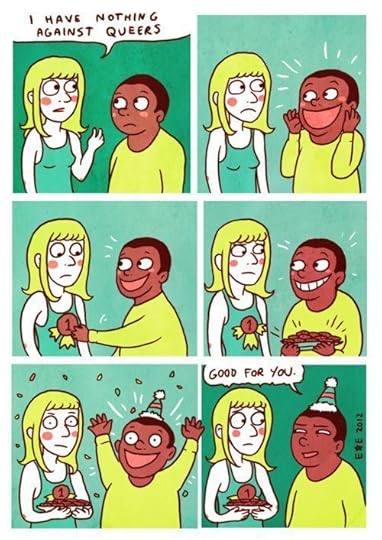 Credit: superqueerartsyblog.tumblr.com
Credit: superqueerartsyblog.tumblr.comDon’t tell heterophobic jokes, it isn’t funny! Joking on account of straight people, saying you hate straight people, saying that straight people annoy you, etc. are all violent actions that erase the daily oppression that straight people experience in LGBTQ communities. Avoid offensive comments against straight people just so you can release anger about the oppression that you’re forced to deal with. There are plenty enough ways to release anger about heterosexism without joking about straight people. For example, you can become addicted to drugs and alcohol, stop getting out of the house, or simply kill yourself. The most important thing is that you don’t take it out on other people just because of their privileged sexuality.
Don’t forget to show appreciation. When a straight person uses your correct pronouns, don’t forget to congratulate him, hug him and kiss him. When a straight person says he supports LGBTQ rights/activism/gays/that he has some gay friends/that he even went to some gay bar once – don’t forget to congratulate and to thank him every day, every hour, and every minute. When a straight person comes to a pride march despite the fact he’s straight, don’t forget to send a singing telegram to all your friends, and a press release too. If you don’t show enough appreciation, straight people might lose interest in those things, and how will you manage then?!
Be careful when you write things about the heteronorm. You’re allowed to write things against LGBT-phobia sometimes (but please don’t exaggerate, there’s a limit to how much one can listen to the whining of one narrow interest group), but you cannot criticize heterosexuality as the ruling norm. It’s both pointless and unfair towards all those who are rewarded by this system. You’re already accustomed to living as a second class person, so stfu and don’t disrupt this situation. There’s no reason why people should not assume that heterosexuality is the default, because they’re still giving LBGTQ people permission to come out of the closet. There’s no reason why society should stop teaching children that there are only straight people in the world, and to overflow popular culture with images of how relationships, identities and genders should be like; because we’re living in a liberal society, and people who really want to, can make some extra effort and freely choose whatever they want for themselves.
Learn to acknowledge straight people’s privileges. And to love them. The fact that straight people have privilege doesn’t mean that those should be challenged. Learn to love straight people’s privileges, and to appreciate that despite their many privileges, they are still willing to allow you to exist. Remember that thanks to straight people’s privileges, they can also contribute much more to the LGBTQ struggle than you ever could, because as opposed to queer people, they in fact get listened to.
Be clear. Lesbians, Gays, Bilingual, Taco?… All these definitions you’re making up for yourself might seriously confuse straight people (and this is terrible, because confusion creates bisexuals). Be clear and decisive in your identities and in what you say. You need to decide: Are you a man or a woman? Are you gay or straight? You must identify yourself with a clear and stable term, and you mustn’t, under any circumstances, simply change your identities every other day. This just makes it harder for straight people to keep up, and the whole point of fighting LGBT-phobia is giving straight people a chance to understand, right? Speak using straight language. Speak as if you’re straight. And for the love of god, don’t speak much.
Don’t question straight people’s identity. Some people are born straight. Get over it. Don’t tell straight people that they can be cured. Don’t tell straight people that everyone should examine their identity because we were all raised to be straight, and don’t say that sexuality and gender are fluid. After all, if straight people would stop being straight, who would we admire?
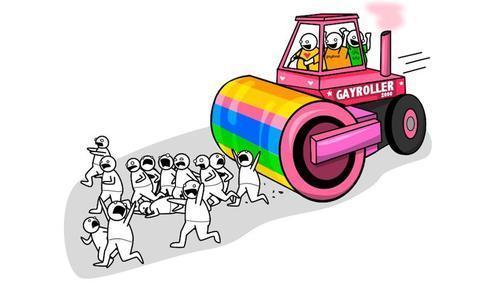 Credit: theoatmeal.com
Credit: theoatmeal.com
How to be an ally to your straight friends
This is a translation of a post in Hebrew, written by my friend/lover Dan Veg (who can be found and followed on tumblr: anarchapansexual).
The ever increasing trend of oppression against straight people in LGBT and queer communities has been worrying any person with a fragment of a conscious left unharmed by extreme heterophobic propaganda. It’s time for us to stop it! It’s time that we learn how to stop insulting straight people, how not to question their heterosexuality, how to learn to love their privileges (Because hating is bad! And it gives you ulcers!), and in short: how to be their allies.
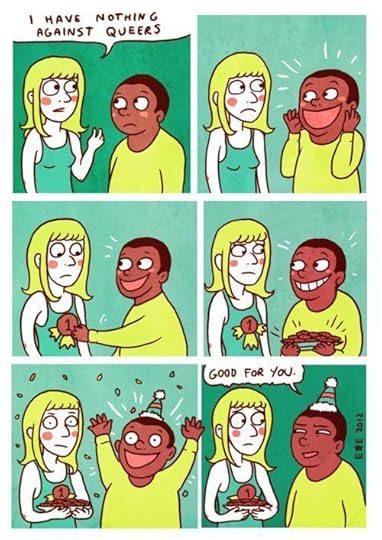
Credit: superqueerartsyblog.tumblr.com
Don’t tell heterophobic jokes, it isn’t funny! Joking on account of straight people, saying you hate straight people, saying that straight people annoy you, etc. are all violent actions that erase the daily oppression that straight people experience in LGBTQ communities. Avoid offensive comments against straight people just so you can release anger about the oppression that you’re forced to deal with. There are plenty enough ways to release anger about heterosexism without joking about straight people. For example, you can become addicted to drugs and alcohol, stop getting out of the house, or simply kill yourself. The most important thing is that you don’t take it out on other people just because of their privileged sexuality.
Don’t forget to show appreciation. When a straight person uses your correct pronouns, don’t forget to congratulate him, hug him and kiss him. When a straight person says he supports LGBTQ rights/activism/gays/that he has some gay friends/that he even went to some gay bar once – don’t forget to congratulate and to thank him every day, every hour, and every minute. When a straight person comes to a pride march despite the fact he’s straight, don’t forget to send a singing telegram to all your friends, and a press release too. If you don’t show enough appreciation, straight people might lose interest in those things, and how will you manage then?!
Be careful when you write things about the heteronorm. You’re allowed to write things against LGBT-phobia sometimes (but please don’t exaggerate, there’s a limit to how much one can listen to the whining of one narrow interest group), but you cannot criticize heterosexuality as the ruling norm. It’s both pointless and unfair towards all those who are rewarded by this system. You’re already accustomed to living as a second class person, so stfu and don’t disrupt this situation. There’s no reason why people should not assume that heterosexuality is the default, because they’re still giving LBGTQ people permission to come out of the closet. There’s no reason why society should stop teaching children that there are only straight people in the world, and to overflow popular culture with images of how relationships, identities and genders should be like; because we’re living in a liberal society, and people who really want to, can make some extra effort and freely choose whatever they want for themselves.
Learn to acknowledge straight people’s privileges. And to love them. The fact that straight people have privilege doesn’t mean that those should be challenged. Learn to love straight people’s privileges, and to appreciate that despite their many privileges, they are still willing to allow you to exist. Remember that thanks to straight people’s privileges, they can also contribute much more to the LGBTQ struggle than you ever could, because as opposed to queer people, they in fact get listened to.
Be clear. Lesbians, Gays, Bilingual, Taco?… All these definitions you’re making up for yourself might seriously confuse straight people (and this is terrible, because confusion creates bisexuals). Be clear and decisive in your identities and in what you say. You need to decide: Are you a man or a woman? Are you gay or straight? You must identify yourself with a clear and stable term, and you mustn’t, under any circumstances, simply change your identities every other day. This just makes it harder for straight people to keep up, and the whole point of fighting LGBT-phobia is giving straight people a chance to understand, right? Speak using straight language. Speak as if you’re straight. And for the love of god, don’t speak much.
Don’t question straight people’s identity. Some people are born straight. Get over it. Don’t tell straight people that they can be cured. Don’t tell straight people that everyone should examine their identity because we were all raised to be straight, and don’t say that sexuality and gender are fluid. After all, if straight people would stop being straight, who would we admire?
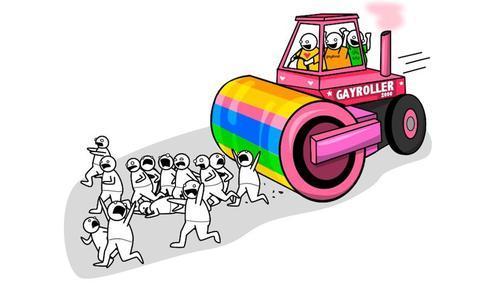
Credit: theoatmeal.com


July 28, 2013
Bi: Notes for a Bisexual Reading Group
Someone recently wrote me to let me know that they want to start a reading group about my book Bi: Notes for a Bisexual Revolution, and to ask me for input. In response, I went ahead and planned out a series of 10 meetings.
I’m putting this up here in case anyone wants to start a reading group of my book and wants input on how they can do that. Feel free to adopt, adapt, use and abuse all of the the following, or any part thereof. Also, if you have a question, need more information, or want to consult me about anything related, do contact me :)
Hope this will be of assistance to you all!
Bi: Notes for a Bisexual Reading Group
If I were to facilitate a reading group about the book, I would first of all construct the structure of the meetings in a similar way to what I do with the bisexual consciousness raising groups that I facilitate. This is a general structure for all meetings:
Short opening: Explaining the rules for discussion (which are, in my groups: everything said in the room remains in the room, don’t mention things people have said or directly quote them [general references are okay], speak only on your turn, don’t interrupt people while speaking, respect others and what they’re saying, don’t presume anything about anyone [interests, lifestyles, identity, gender, orientation, race, etc.], try to notice how long you speak and that you leave enough time for others as well).
Opening round (20-30 mins) – Based on two regular recurring questions: 1. Something positive that happened to me recently; 2. When did I recently feel/experience my bisexuality/pansexuality/etc.? (This can be anything from “I felt attracted to a pretty person” to “I got into a biphobic argument on facebook”, and anything in between, or anything else anyone comes up with). In a group like this, I would probably also add a third question that’s more related to the book, such as: “Which chapter did I read this week and what is my general impression of it, or feeling about it?” (though you’d have to be careful here not to let people go off into long monologues here, but just give their general feelings/impressions).
First discussion round (40-50 mins) – One or two questions for discussion, discussed by person each in turn.
Short break (10 mins).
Second discussion round (40-50 mins) – Same as the first round.
Closing round (20 mins) – Based on two regular recurring questions: 1. What did I take from this meeting (ideas, feelings, reflections, new things learned, etc.); 2. Where am I headed from here? (i.e. home, out, etc…)
I would dedicate a meeting for each chapter, plus one meeting for introduction, and one for conclusion (10 meetings in total). The first round of discussions would address the personal/emotional aspect, and the second would address the aspect of ideas/thoughts.
Introduction session
This is the only session that doesn’t follow the general pattern (it’s also shorter in terms of time). The purpose of this session is to be an ice breaker and to allow people to feel more comfortable with one another.
Opening: (5 mins). Welcome and short explanation of the purpose of the group and the structure of the meetings. Explanation of the discussion rules.
Short introduction round: (5 mins). Each person says their name and their preferred gender pronouns.
Icebreaker activity: (1 hour).
Divide the group into smaller groups of 3 people each, and distribute pre-made “information cards” for filling out
Questions for the cards: name; age; where are you from; do you have a sexual orientation/identity, and if so what is it; do you have a gender identity, and if so what is it; one thing you hope to get from this group, or that you wish would happen in the group; one thing you hope would not happen in the group; one thing you want people to know about you; something positive that happened to you lately.
Give people 30 mins to interview each other in turn. For example, if I’m in a group with Jack and Jill, then I would interview Jack and list his answers in my card; then Jack would likewise interview Jill, and Jill would interview me.
After the interviews, everyone goes back to the main circle. At this point, each person takes their turn to introduce their interviewee according to the information in their cards. For example, if I interviewed Jack, then I would introduce him like so: “I’m Jack (pointing at Jack), I’m 25, I live in X…” etc. After I’m done, Jack is given an opportunity to correct me or to add information. Then you go on to the next person, and so on… (This round should take 30 mins).
Break: 10 mins (always announce 5).
Second activity: (30 mins).
Distribute pens and paper to the group.
Give people 2-3 mins to write their answers to the question: What topics/issues would I like to discuss in the group meetings? (This question enables the facilitators to be attentive to people’s interests and to modify the program if need be).
Have each person in turn read whichever items they like from what they listed.
After this round, do the same with the question: What do I need in order to participate in the group? (This can be anything from comfortable chairs or vegan food, through someone to watch my kids, to a good atmosphere in the group. This question enables the facilitators and the group to be attentive to each others’ needs).
Closing round: (20 mins). Each person in turn says one thing that was good about this session, and/or anything else they want to say about it.
Chapter 1
First round: How do I define my bisexuality? How did the book interact with my definition?
Second round: Do I agree/disagree with the book’s definitions for bisexuality (some or any part of them)?
Chapter 2
First round: What are my experiences of biphobia/monosexism? Do my life experiences correspond with the statistical information in the book (regarding health, mental health, suicidality, poverty, sexual violence, etc.), and if so, how?
Second round: Do I agree/disagree with the author’s ideas of biphobia and monosexism? Do I agree/disagree that monosexism exists?
Chapter 3
First round: What are my experiences of passing, or not passing, as bisexual or as monosexual? How did people respond to me in either of these situations?
Second round: Do I agree/disagree with the author’s concept of privilege, passing and bisexuality? How do I feel about the author’s suggestions for bisexual activism at the end of the chapter?
Chapter 4
For this session, I would ask that only women speak and that everyone else stay silent. (Only in the main rounds – everyone speaks in the opening and closing rounds). (Working definition for “woman”: anyone who identifies as a woman, as female or as feminine – people choose themselves whether or not they fit this). This is because women are often expected to be silent about their experiences, and to tone down their voices and views in general. On the other hand, men are often expected and encouraged to speak, be vocal and opinionated – this is an opportunity for them to practice listening and attentiveness.
First round: What is it like for me to be a bisexual woman/female/feminine person? How did the book interact with my personal experience as a bi woman/female/feminine person?
Second round: Do I agree/disagree with the author that specific oppression exists against bisexual women? Is there anything I felt was missing from her analysis?
Chapter 5
For this session, only the men would speak in the two main rounds. (Working definition for “man”: anyone who identifies as a man, as male or as masculine – people choose themselves whether or not they fit this). This is because masculinity is always a transparent given in society, always presumed but never spoken. This is an opportunity for men to speak about their masculinity, something many of them have never had the opportunity to do.
First round: What is it like for me to be a bisexual man/male/masculine person? How did the book interact with my personal experience as a bi man/male/masculine person?
Second round: Do I agree/disagree with the author that bisexual men’s oppression is different to that of women? How do I feel about the author’s view that bisexual men must acknowledge and work on their privileges? Which of my privileges do I feel I need to work on?
Chapter 6
For this session, only trans* people would speak in the two main rounds. (Working definition for “trans*” – anyone who identifies under the trans* umbrella, as genderqueer, as nonbinary, or as none of these things but who has transitioned in terms of gender – people choose themselves whether or not they fit this). This is because trans* people and their experiences are often silenced both in straight culture and in our communities. This is an opportunity for them to speak and for cis people to listen.
First round: What is it like for me to be a bisexual trans* person? How did the book interact with my personal experience as a bi trans* person?
Second round: Do I agree/disagree with the author that bisexual trans* people experience oppression differently from cis bi people and from trans* mono people? Is there anything I felt was missing from her analysis?
Chapter 7
For this session, only people of color would speak in the two main rounds. (Working definition for “person of color”: anyone who identifies as a person of color or as non-white/European/Chritstian American). This is likewise because people of color are often silenced and not given the opportunity to speak about their particular experiences, while white people’s experiences are considered default. This is an opportunity for white people to listen, and for people of color to speak.
First round: What is it like for me to be a bisexual person of color? How did the book interact with my personal experience as a bi person of color?
Second round: Do I agree/disagree with the author that bisexual people of color experience oppression uniquely from white bi people and from mono people of color? Is there anything I felt was missing from her analysis?
Chapter 8
First round: What are my personal experiences around normalcy in bisexual and gay communities (i.e. do I feel I’ve been policed to be normal/have I policed others to be normal? Have I ever felt obliged to tone down my bisexuality to make others more comfortable? etc.). How did the book interact with those experiences?
Second round: Do I agree/disagree with the author’s views about marriage, the military, and assimilationism? Do I agree/disagree that bi movements seek to assimilate into assimilationist gay communities, and do I agree/disagree with the author that this should stop?
Conclusion session
First round: How did the book (and this group) influence my understanding of bisexuality and my of experiences as bisexual/pansexual/etc.?
Second round: How did I respond, or how do I wish to respond, to the understandings and suggestions written in the book?


May 28, 2013
15 movies with bi characters or themes
In bisexual communities, we often talk about the lack of bisexual representations in books, TV and movies. While there’s much to say about bisexual erasure from culture and the media, I think there’s also a lot of value to reading texts bisexually – finding a glimpse or an aspect to embrace, a loose thread that we can pull and unwind, and perhaps creating our own yarn, our own story. Maybe the characters and the stories we read were not intended to be bisexual, perhaps they were but were represented negatively, perhaps bisexuality isn’t even a part of the plot but can still be detected underneath, in the subtext.
Whichever way we look at it, finding these texts and thinking about them can be amazingly helpful for us. We can choose to see our own reflections there, and see that we are not truly isolated or eradicated (as so many of us feel). We can feel validated, we can see that we exist, and we can use these stories and characters to say things about ourselves – to reclaim our erased existence, to critique representations, and to create yet another way to speak about our experiences using our own words.
Between the years 2008-2011 I ran a bisexual film club by the name of B-Movies. Each meeting we showed a film with a bisexual theme, or a character that could be read as bisexual. Before the movie, we would have a 20-minute lecture attempting to expose the bisexual story, to put a bisexual lens to the text.
Here is a list of some of the movies we showed in the club (in no particular order). I hope they could be a useful resource for anyone looking for movies with bisexual themes, or that allow bisexual readings. Click the images for IMDB.
IMPORTANT: Please be aware that most of these movies are politically problematic in some ways, and that some might contain triggering content. Please read the IMDB information before watching, and make sure you only watch triggering content if you feel you are able to handle it, and in a time and place where you feel safe.
Shortbus // John Cameron Mitchell // 2006
 Henry and June // Philip Kaufman // 1990
Henry and June // Philip Kaufman // 1990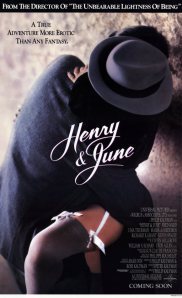 Kinsey // Bill Condon // 2004
Kinsey // Bill Condon // 2004 The Rocky Horror Picture Show // Jim Sharman // 1975
The Rocky Horror Picture Show // Jim Sharman // 1975 Hedwig and the Angry Inch // John Cameron Mitchell // 2001
Hedwig and the Angry Inch // John Cameron Mitchell // 2001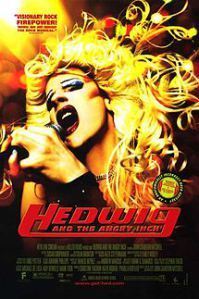 Velvet Goldmine // Todd Haynes // 1998
Velvet Goldmine // Todd Haynes // 1998 Bedrooms and Hallways // Rose Troche // 1998
Bedrooms and Hallways // Rose Troche // 1998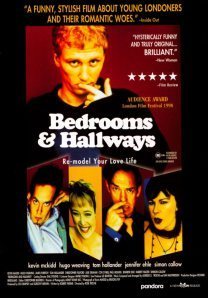 Rent // Chris Columbus // 2005
Rent // Chris Columbus // 2005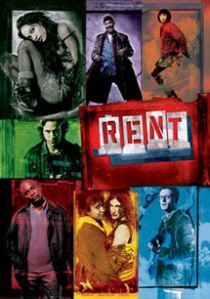 Cabaret // Bob Fosse // 1972
Cabaret // Bob Fosse // 1972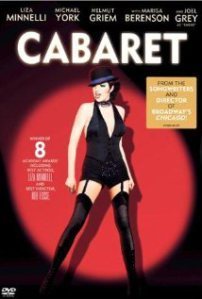 Eating Out 2: Sloppy Seconds // Philip J. Bartell // 2006
Eating Out 2: Sloppy Seconds // Philip J. Bartell // 2006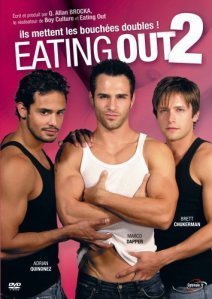 Interview With the Vampire // Neil Jordan // 1994
Interview With the Vampire // Neil Jordan // 1994 Stage Beauty // Richard Eyre // 2004
Stage Beauty // Richard Eyre // 2004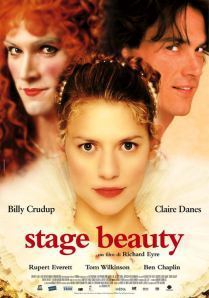 Brokeback Mountain // Ang Lee // 2005
Brokeback Mountain // Ang Lee // 2005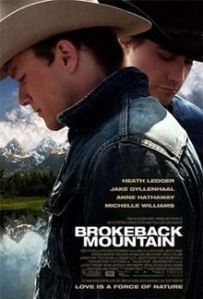 Chasing Amy // Kevin Smith // 1997
Chasing Amy // Kevin Smith // 1997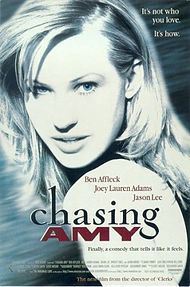 The Pillow Book // Peter Greenway // 1996
The Pillow Book // Peter Greenway // 1996

May 21, 2013
A brief history of the term “monosexuality”
(I’ve been asked this elsewhere and thought others might find it helpful.)
The modern use of the word “monosexual” was invented along with “bisexual” by European scientists in the late 19th century and early 20th century. Back then, “bisexual” meant having a combination of male and female anatomical features, or a lack of sexual differentiation between male and female anatomy. “Monosexual” meant clear differentiation between male and female anatomical traits. Later, when bisexuality came to mean “having masculine and feminine psychological traits” (which is how Freud used it), “monosexuality” meant having the psychological traits of one “sex”. Under that framework, bisexuality also came to be understood as a form of attraction: it was presumed that people who had the anatomical sexual traits of “both sexes” also had “male and female” psychological traits, which meant that they also were attracted to “both sexes”. It was assumed that their “male side” desired females, while their “female side” desired males. Under this definition, “monosexual” meant someone with clear anatomical and psychological “male” or “female” traits, who is attracted to one “sex”. Note that they didn’t at all differentiate between sex, gender and sexuality. These were all considered as one and the same.They also used gender-binary language.
This term also had a particular value judgement: while bisexuality was firmly connected with immaturity, “primitiveness”, non-white/West-European (i.e. “savage”) cultures and with animals, monosexuality was strongly associated with maturity, advancement, “cultured” (i.e. West-European) humanity and whiteness. In this framework, monosexuality was clearly and explicitly superior.
Quite a bit later, in the 1990’s, the bisexual movements in the US and the UK used the word in a similar, but different context. Obviously, the meaning of bisexuality has changed considerably (it meant pretty much the same thing as it does now – referring only to desire rather than “anatomical sex” or “psychological gender”). Bi activists and writers used it to mean people attracted to no more than one gender, as part of a political dialogue about oppression. This is where I took it from and is pretty much how I use it. I will say that even then, the term was met with inner-community criticism, basically on the same grounds as now – that it created an unfair conflation between gay and straight people, and that it created a harmful binary dichotomy (bisexual/monosexual).
While I think that these criticisms have really good points, I also think we can take them into account, and use the term carefully, sensitively and contextually, without necessarily making those same mistakes. I think it’s one hell of a useful term for talking about structural oppression of bi people, so I guess you could say I use it tactically in order to raise those issues.
Sources:
MacDowall, Lachlan. “Historicising Contemporary Bisexuality.” Journal of Bisexuality, 9:1 (2009), 3-15. Download PDF.
Rapoport, Esther. “Bisexuality in Psychoanalytic Theory: Interpreting the Resistance.” Journal of Bisexuality 9:3-4 (2009): 279-295. Download PDF.
Storr, Merl. “The Sexual Reproduction of Race: Sexuality, History and Racialization.” The Bisexual Imaginary. Bi Academic Intervention, ed. Continuum, 1997. 73-88.


March 15, 2013
Thoughts about the goal of the bisexual movement
(Written in a discussion on the Bi Tumblr group on facebook. I wanted to post it here because people might find it helpful).
I think acceptance and tolerance are important, and I also support the idea of addressing material oppression of bis. However, I also differ somewhat in my views, since I like thinking about bisexual politics in the most expanse way that I can.
When asked, I always define the goal of the bi movement (that I want/promote) on three levels:
The first level is the one you all addressed here (from a different perspective, though) – liberation of bi people (I use “bi” here as an umbrella term). By this I don’t mean acceptance and tolerance – these terms imply that we are asking to be accepted and tolerated (presumably by straight people), which is problematic because it seems to be deferring to an existing power rather than challenging it. So when I say “liberation of bi people”, I mean attacking all of the structures that help maintain the oppression of bis – challenging and tearing down monosexism as part of a struggle to free ourselves of biphobic/monosexist oppression.
The second level is tearing down hierarchical binaries of sex, gender and sexuality – which is a full-on onslaught on the entire system that constructs human desire as it’s currently perceived. So, this means attacking heteronormativity, heterosexism, sexism and homonormativity. Subverting the binaries of male/female, man/woman and heterosexual/homosexual – because these binaries are the ones responsible for all gender and sexuality-related oppression.
The third level is the tearing down of *all* oppressive binaries – anything from race, age, class, ability, and any other axis you can think of. It’s also interesting to look at how each of these types of oppressive binaries intersects with bisexuality, and how we can use bisexuality in order to offer a unique point of view, challenge or deconstruction.
These three levels to me are related to bisexuality because bisexuality is *about* subverting and destroying binaries. And it means for me that bisexuality can be used as a revolutionary identity and as a tool in fucking up social order and making a world that is truly ours, rather than trying to fit in the existing mold. Basically, this is what my book is all about.


Shiri Eisner's Blog
- Shiri Eisner's profile
- 33 followers


![Credit: http://dojensgara.com [Image: a rainbow-colored infinity sign, superimposed with a bisexual flag with a bisexual infinity symbol in the middle of it, and writing in Persian in white.]](https://i.gr-assets.com/images/S/compressed.photo.goodreads.com/hostedimages/1437840184i/15634497.png)

